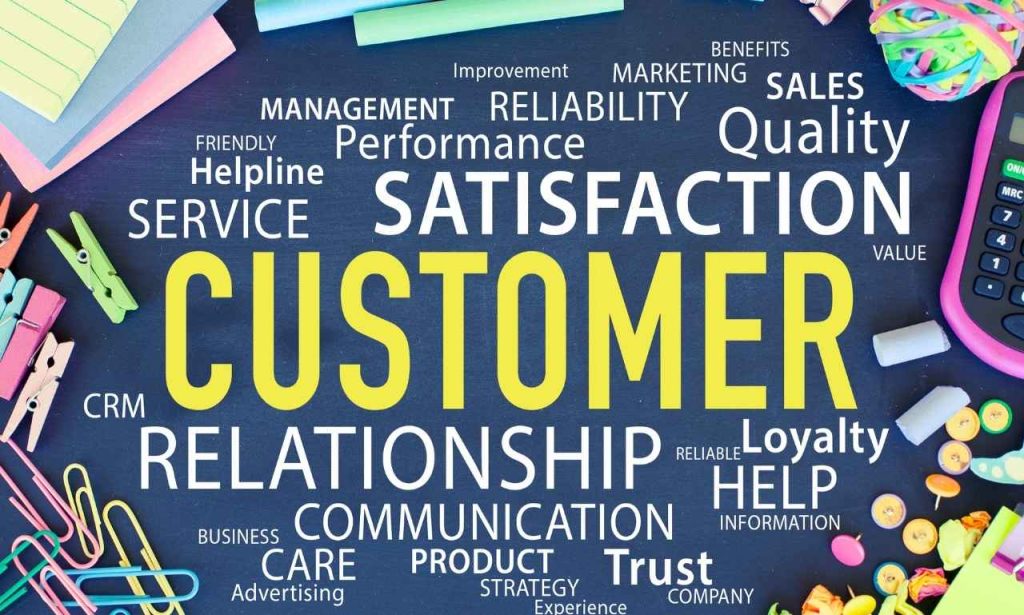Customer experience has become the ultimate differentiator in today’s hyper-competitive business landscape. Technology continues to reshape how companies interact with their customers, and AI and automation emerge as revolutionary solutions for addressing complex customer service challenges.
Modern businesses face unprecedented pressure to deliver seamless, personalized experiences. Customer expectations demand instant, accurate, and empathetic support across multiple channels. Technology provides remarkable opportunities to transform these challenges into competitive advantages.
What is Customer Experience Automation?

Customer experience automation represents a sophisticated integration of artificial intelligence and technological tools. These intelligent systems help businesses manage customer interactions with unprecedented efficiency and precision. Advanced platforms employ intricate algorithms that enable them to interpret and predict different customer demands for adequate responses.
Modern automation systems perform more advanced capabilities than standard rule-based systems. They leverage machine learning and natural language processing. The systems track user behavior but use collected historical information to evolve their ability to predict customers’ needs.
Such platforms elegantly connect technological efficiency to human-like understanding. They can read between the lines while detecting emotional aspects of speech and offering tailor-made suggestions to customers. This system produces a customer service environment that delivers improved user experience and fast responses.
Benefits of Customer Experience Automation
Faster Response Times
Customer satisfaction now heavily depends on the speed at which companies provide service. Such automated systems deliver immediate responses to standard customer inquiries, offering instant help to customers who do not need to endure long wait times.
Recent research shows that 64% of consumers demand immediate assistance. Automation serves as a solution to close the customer expectations gap. Instant communication builds trust and demonstrates organizational responsiveness.
Reduced response times directly correlate with improved customer loyalty. Companies that implement intelligent automation see significant improvements in customer retention rates. Every second saved becomes a potential relationship-building opportunity.
Deeper Insights
AI and automation tools dissect customer interactions with surgical precision. Patterns and trends emerge that human analysts might overlook entirely.
Advanced sentiment analysis transforms raw communication data into actionable insights. Companies can now understand not just what customers say but how they feel. This emotional intelligence drives more empathetic and targeted service strategies.
Machine learning algorithms continuously refine their understanding. They identify subtle correlations and predict potential customer behaviors, enabling businesses to address customer needs proactively.
24/7 Support
Global businesses need customer service that operates without interruption at all times. The automated system delivers consistent support throughout all time zones and geographical areas, enabling customers to get help anytime.
Automated systems deliver their operations without any reliability issues. They deliver continuous service quality that never becomes tired or irregular. The ability to provide constant service is now a major asset that gives companies a competitive edge.
International businesses can deliver support to their diverse customer groups without interruption. Companies experience reduced language barriers because their translation and interpretation capabilities increase in intelligence.
Empowers Customers and Agents
Many people wrongly assume that automation technology eliminates human agents from their roles. The system enables personnel to dedicate their efforts to handling complex and high-value interactions. Automated processes handle routine tasks, which allows human personnel to become free.
The automation allows customer support representatives to allocate more time toward relationship building and complex problem resolution tasks. The workforce devotes time to handling conversations requiring emotional intelligence and creative thinking abilities. Technology operates as an assistance system to enhance human operational effectiveness.
The partnership between artificial intelligence and human agents produces enhanced, meaningful customer interactions. The workplace environment improves when employees become more engaged and less stressed from repetitive work.
Automated Customer Experience Challenges
Implementing automation isn’t without challenges. Businesses need strategic thinking to handle the limitations of their implementation strategies across different contexts.
Strategic decision-making must determine how to achieve the correct ratio between technology-driven efficiency and human interaction in customer service. Excessive automation generates unsatisfactory customer interactions, which frustrate customers. The solution exists through well-considered designs that prioritize human interaction.
The process of adopting automation depends on both cultural and generational characteristics. Businesses need to create adaptable systems that accept multiple customer preference types. Current success requires organizations to place emphasis on adaptability and customization features.
Automated Customer Experience Platforms

Modernity has brought automation systems that contain advanced multifaceted functionalities. These platforms merge communication methods into single customer interaction networks. The application of machine learning results in the perpetual enhancement of system performance.
The system implements two main technological elements: advanced natural language processing and intelligent routing capabilities. Advanced technology systems detect extensive context patterns while grasping customer intents, transforming top-notch customer treatment into basic standard practices.
Cutting-edge platforms now incorporate predictive analytics. They can anticipate customer needs before explicit requests. This proactive approach represents the next frontier of customer service.
How AI Saves Time for Professionals
Implementing automation technologies effectively decreases manual work requirements at all organizational levels. Any repetitive administrative work that an intelligent system completes instantly frees up professional time for high-impact tasks of strategic importance.
According to research findings, artificial intelligence enables employees to regain about 2.5 hours of daily work time. You could transfer this time by developing innovation combined with creative ideas, which fuel organizational growth. The accelerated growth in productivity provides essential competitive benefits to organizations.
The time employees gain from automated processes leads to better job satisfaction. Employees have more time to perform valuable tasks that generate business success.
Challenges of Customer Service Automation
Less Connection
Modern automated systems tend to operate without showing genuine emotional responses. The system fails to detect small human communication signals. Personal connections can feel compromised.
Lack of Emotional Intelligence
AI struggles with complex emotional scenarios. The ability to empathize exists only in human beings, but particular circumstances need genuine emotional human involvement.
Technical Issues
Technology isn’t perfect. Technical systems occasionally develop operational errors and processing problems. Backup human support remains crucial.
Cultural Resistance
Some customers, especially older customers, prefer traditional communication methods. Because of their discomfort with automated systems, change management becomes essential.
When to Automate and When Not to Automate
Not all customer interactions suit automation. Complex, emotionally charged scenarios require human intervention, so businesses must strategically choose automation targets.
Simple, repetitive inquiries work well with automation. Technical support and basic information requests are ideal. Nuanced, personalized interactions need a human touch.
Best Practices When Implementing Customer Service Automation
Define Your Strategy and Goals
Clear objectives guide successful automation. Understand specific business needs and customer expectations. Develop a comprehensive implementation roadmap.
Understand Customer Needs
Research customer preferences thoroughly. People from different population groups exhibit various levels of comfort regarding technology. Customize automation strategies accordingly.
Evaluate Tools
Choose platforms with robust features. Check for scaling operations capabilities while researching how well systems integrate and analyze data. Execute multiple solution tests to make your final choice.
Conduct Thorough Testing
Simulate various customer interaction scenarios. Check for any shortcomings that automated systems could generate in their responses. Continuous refinement ensures optimal performance.
Ask for Feedback
Customer input drives improvement. Feedback surveys and feedback systems help organizations improve their automation approach. Listen and adapt continuously.
Provide a Route to Humans
Always offer human support options. Customers need to find prompt access to live human agents for their support needs. Seamless transition matters most.
How to Automate Customer Service
AI Summarize
Automatically generate concise interaction summaries. Quick and precise point recording produces accurate results. Improve information retention and accessibility.
AI Assist
The system should present immediate recommendations that human agents can use during their interactions. This would enhance response quality and consistency and leverage machine learning insights.
AI Drafts
Generate initial response drafts automatically. Agents can review and personalize as needed. Accelerate response times dramatically.
Saved Replies
Create libraries of pre-approved response templates. Ensure consistent, accurate communication across channels. Reduce response time significantly.
The Future of Customer Experience Automation
Emerging Technologies and Trends
Artificial intelligence progresses at an extraordinary speed. New technologies show great potential to change the standards of customer experience automation. Quantum computing and advanced machine learning will open new ways of operation.
Top-end computing proves its strength in generating groundbreaking instant interactions with customers. Decentralized artificial intelligence systems achieve faster and efficient data processing. Personalization will exceed even the most sophisticated market standards regarding precision and detail.
Ethical Considerations in Automation

The increased capability of AI systems makes ethical issues vital at this stage. Companies must establish open communication practices with their customers. Good automation practice demands the creation of a comprehensive ethical framework.
Every customer across the globe maintains data privacy as their top priority. Companies must implement robust protection mechanisms. Clear communication about data usage builds customer confidence.
Preparing for the Next Generation of Customer Experience
Organizations need to invest in continuous learning and adaptation. Technology evolves rapidly, demanding an agile approach to customer service. Workforce training becomes crucial in this dynamic landscape.
Developing hybrid skill sets will become increasingly important. Employees must understand both technological tools and human-centric service principles. The most successful teams will blend technical expertise with emotional intelligence.
Global Impact of Customer Experience Automation
Automation democratizes high-quality customer support for businesses of all sizes. Small companies can now compete with enterprise-level service capabilities, and technology levels the playing field across global markets.
Developing economies will see significant transformations through intelligent automation. Remote workforce opportunities will expand dramatically. Customer service becomes a truly global, interconnected ecosystem.
Measuring Automation Success
Traditional metrics no longer suffice for measuring customer experience effectiveness. New key performance indicators emerge. Sentiment analysis, predictive satisfaction scores, and holistic customer journey mapping become essential.
Companies must develop comprehensive evaluation frameworks. Quantitative and qualitative metrics provide a complete picture. Continuous improvement becomes the fundamental principle of modern customer service.
Conclusion
The delivery of services through customer experience automation brings about fundamental changes to service practices. Businesses gain power through intelligent technologies to fulfill changing customer requirements. The strategic implementation phase delivers major competitive advantages to businesses.
You should welcome automation systems as helpful resources. Balance technological efficiency with human empathy. The future of customer service is collaborative and intelligent. Continuous learning, adaptation, and human-centric design will define successful automation strategies. Companies that view technology as an enabler, not a replacement, will lead the customer experience revolution.
Also Read: The Role of AI and Machine Learning in Sales in 2025
FAQs
The initial investment varies, but the long-term cost savings are significant.
No, automation complements human skills, focusing on collaboration.
Implementation time depends on complexity, typically 3-6 months.
Reputable platforms employ advanced security protocols.
Yes, scalable solutions exist for businesses of all sizes.




